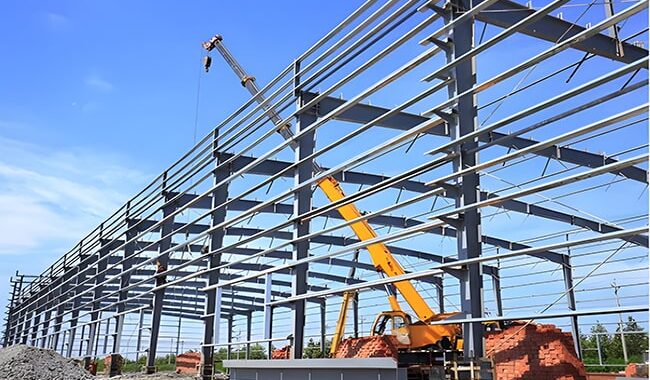In the construction of modern storage facilities, steel structure warehouses have become one of the mainstream building forms due to…
The Asian Games is the largest comprehensive sports meeting among the five rings of Asia, held every four years. In 2023, this honor will fall to Hangzhou, China, and the Hangzhou Asian Games reached a perfect conclusion on October 8. As a representative and iconic sports event, the Hangzhou Asian Games has a series of world-class venues, providing athletes and spectators with rich, engaging, rigorous, and meticulous competition venues. Among them, the Hangzhou Olympic Sports Center, as the core venue of the Hangzhou Asian Games, plays a vital role.
Among the 56 competition venues for the Hangzhou Asian Games and Asian Paralympic Games, only 12 are newly built, and the rest are renovated and upgraded existing outlets. These venues not only reflect the exquisite modern architectural technology but also incorporate traditional Chinese cultural elements, showing the unique charm of Hangzhou.
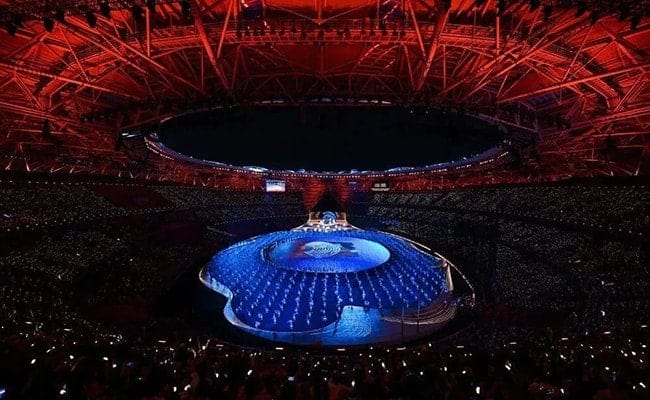
Hangzhou Olympic Sports Center
As a sustainable public space, the Hangzhou Olympic Sports Center has become another world-class sports venue in Hangzhou. The main stadium of Hangzhou Olympic Sports Center is located on the south bank of the Qiantang River. The stadium covers an area of approximately 82,300 square meters. It is currently the third stadium in China that can accommodate more than 80,000 people.
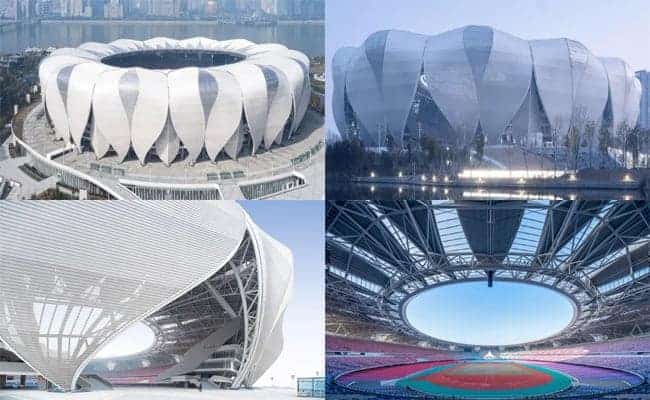
The design of the Hangzhou Olympic Sports Center is inspired by the fluctuations of the Qiantang River and the elegance of Hangzhou silk. The exterior facade of the venue adopts the iconic lotus petal design, consisting of 28 large petals and 27 small petals, like a blooming white lotus.
The Hangzhou Olympic Sports Center Tennis Center (Little Lotus), which echoes the stadium in form, is the first to have an opening and closing structure on the top. When the roof is opened, it looks like a blooming lotus, which is lifelike and unique.
Hangzhou Olympic Sports Center: Swimming Pool
The Hangzhou Olympic Sports Center Swimming Hall (referred to as the “Sports Swimming Hall”) is the main venue of the Hangzhou Asian Games. During the Asian Games, it is responsible for basketball, swimming, diving, and synchronized swimming competitions. The platform is like a butterfly spreading its wings to fly.
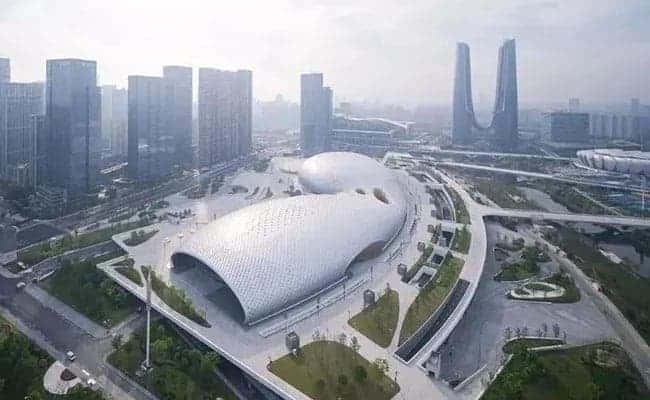
Under the control words of iconic Hangzhou, water, large volume, and strong vision, the form of silver-white aluminum alloy scales is refined, resembling the frozen moment of a giant dragon passing through.
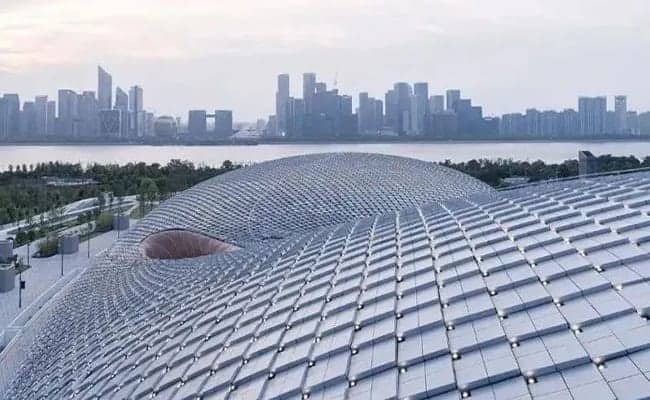
Hangzhou Olympic Sports Expo City Comprehensive Training Hall
The city of Hangzhou has always adhered to the values of sustainable development and is committed to building itself into a livable and travelable city.
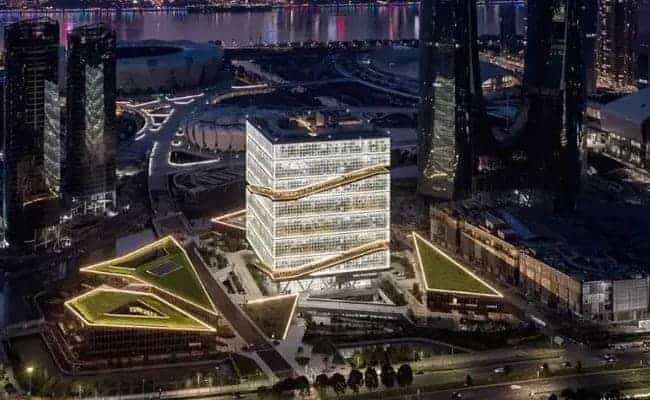
It is out of this mission that Hangzhou City launched an open competition in 2009 to collect design proposals for the Olympic Sports Center Comprehensive Training Hall, aiming to create a symbolic and extraordinary new landmark building for urban construction.
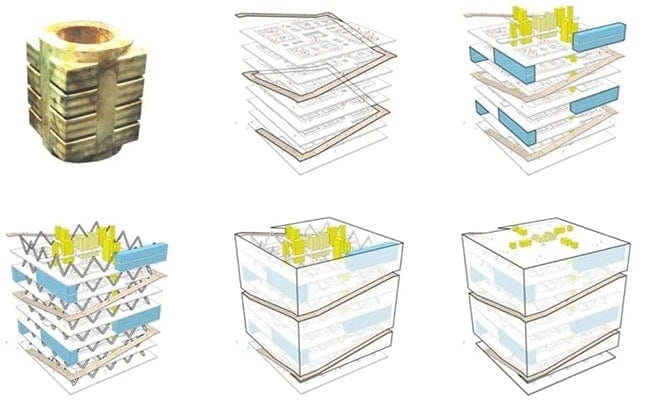
Hangzhou Asian Games Baseball and Softball Sports and Culture Center
The Hangzhou Asian Games Baseball (Softball) Sports and Culture Center (baseball and softball event venue) is the largest of the 12 newly built venues for this Asian Games. It is also the most significant baseball (softball) competition in China and the most in line with international competition standards. The venue can accommodate 10,000 spectators.
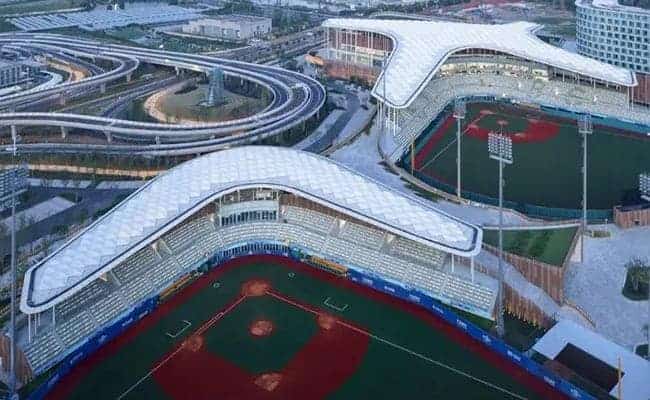
The venue’s appearance design incorporates Shaoxing textiles, awning boats, and calligraphy. Among them, the vast canopy “Wings of Cloud” above the platform is the biggest highlight of the project. Through the digital model reconstruction technology of drone aerial photography and three-dimensional scanning, This presents the architectural beauty of “Wings of Clouds.”
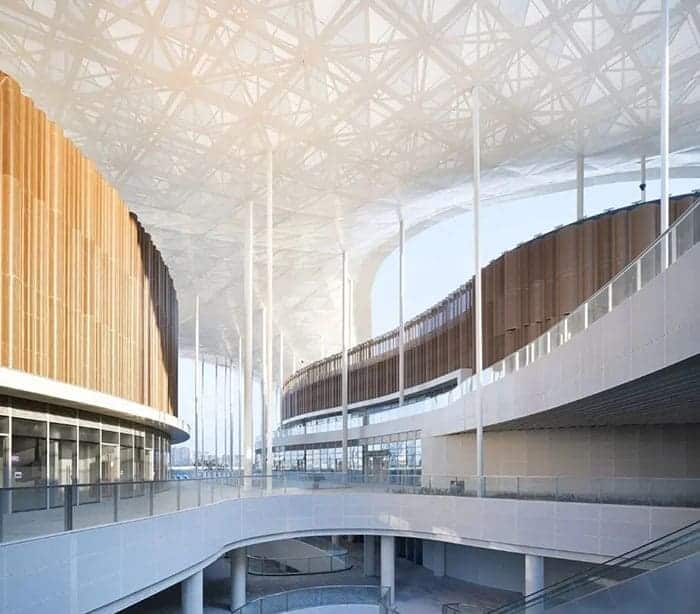
Fuyang Silver Lake Sports Center
Silver Lake Sports Center utilizes modern construction technology in its design to become a multi-functional sports arena. While meeting the functions of the event, it returns to the essence of the place and blends harmoniously with the natural landscape. Pass the charm of Hangzhou and the characteristics of Fuyang to participating international athletes and coaches.
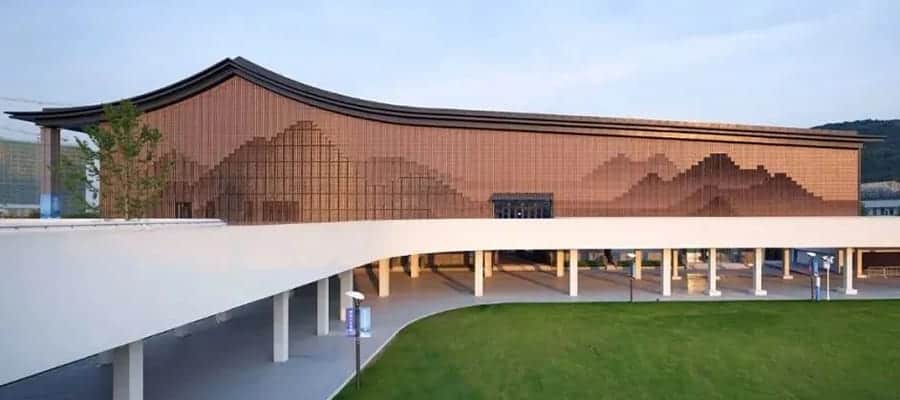
The facade curtain wall of the venue building uses “louvers” as unit modules. By rotating more than 37,000 unit modules at different angles, using a low-tech and simple shaft method, “using louvers as a pen and sunlight as ink,” it once again outlines the Natural scenery along the Fuchun River.
Huanglong Sports Center Swimming and Diving Hall
The Huanglong Sports Center Natatorium is located on the bank of West Lake in Hangzhou and is the competition venue for the 2022 Hangzhou Asian Games. The main internal functions are a swimming competition pool, a diving competition pool, and a warm-up training pool.
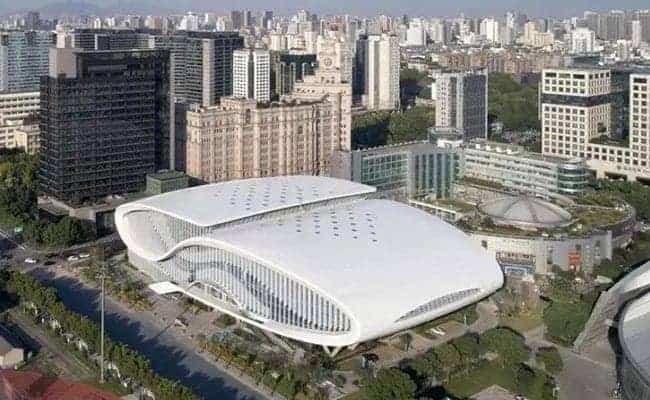
The Huanglong Sports Center Natatorium is located on the bank of West Lake in Hangzhou and is the competition venue for the 2022 Hangzhou Asian Games. The main internal functions are a swimming competition pool, a diving competition pool, and a warm-up training pool.
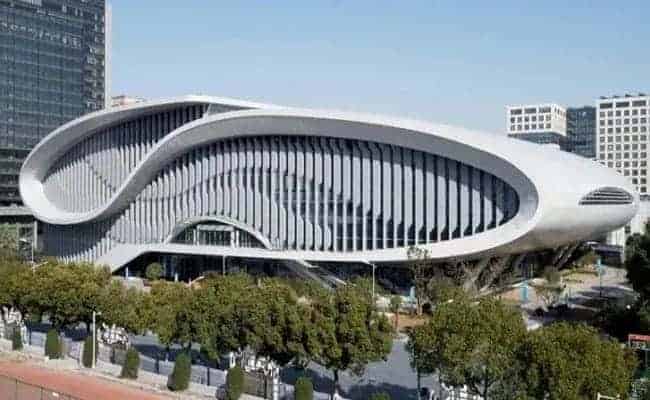
Hangzhou E-Sports Center
In 2022, after e-sports was officially established as a competition event at the Hangzhou Asian Games, the completion of the Hangzhou E-sports Center marked the official debut of China’s first Asian Games e-sports standard venue.
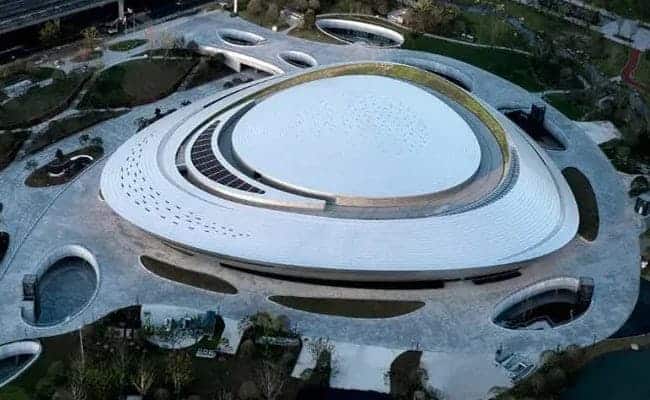
The dynamic and smooth silver color expressed by the aluminum plate material on the skin of the e-sports center building makes the overall building like a “star battleship” traveling through time and space, connecting fantasy and reality, perfectly matching the “science fiction, future, and dynamic” keywords of e-sports, integrating architecture and environment.
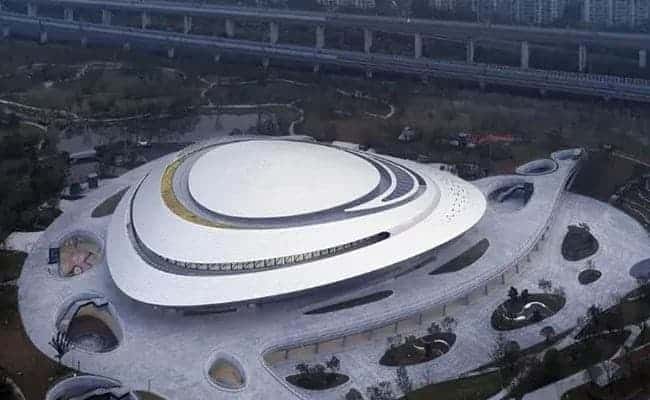
Hangzhou Canal Asian Games Park
The mixed-use main stadium, designed by Archi-Tectonics and based on jade cong, is the core venue of the Canal Asian Games Park, one of the competition venues for the 2022 Hangzhou Asian Games.
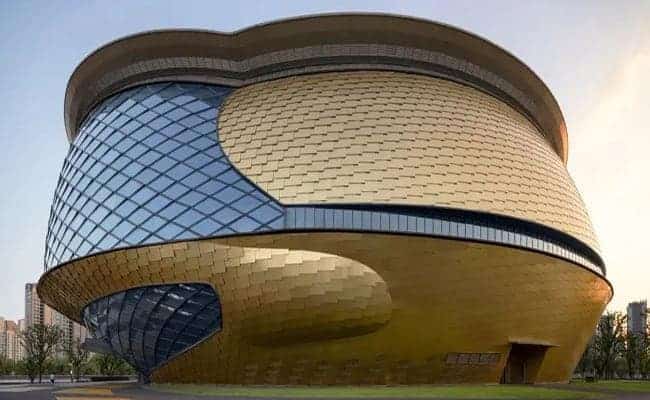
The hybrid architecture reflects the area’s heritage, with the stadium concept employing the staggered geometry of the “jade cong” – an ancient jade artifact in the shape of a square tube with a circular hole – which is also A hybrid building, rather than a single-purpose gymnasium, thus maximizing the adaptability of the building and inheriting the spirit of Hangzhou.
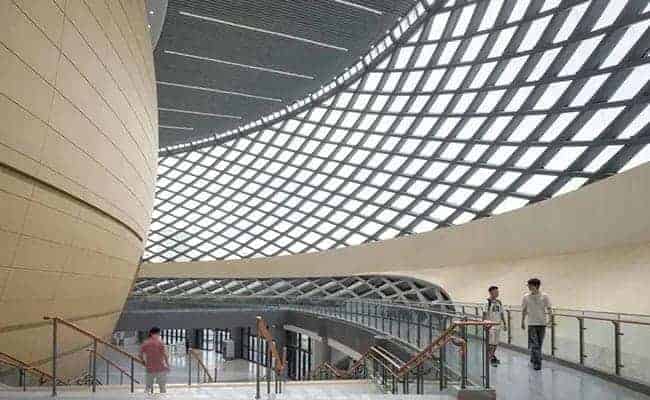
Hangzhou Asian Games Shaoxing Yangshan Rock Climbing Center
The rock climbing center is next to the Yangshan Quarry Heritage Park in Shaoxing. This stone park is from stone mining in the Sui and Tang Dynasties. Its real-life wonders of “remaining mountains and water, cliffs and solitary peaks” must be developed.
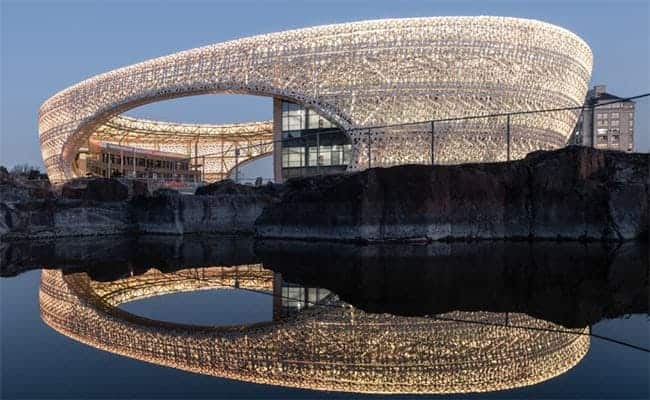
Regarding environmental concepts, the architect respects nature and adapts to the site. The architecture and the environment are harmonious and integrated. In terms of regional vision, the hollow “cocoon” shape interprets Hangzhou’s “Silk House” and Shaoxing’s urban image as an “International Textile City” to strengthen its characteristics and highlight its individuality; in terms of technical concepts, open and semi-open spaces will reduce building energy consumption and are low-carbon and environmentally friendly; in terms of cultural ideas, Chinese landscape and international The competition is cleverly integrated, and traditional culture and contemporary elements complement each other, demonstrating the confidence of Chinese architectural culture.
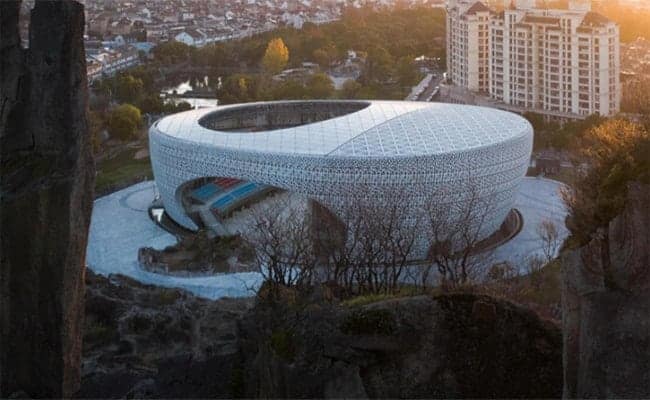
Combined with the Hangzhou Asian Games, a once-in-a-lifetime event, we can’t help but feel proud of the magnificent appearance of this ancient and modern city. The Asian Games ended perfectly on October 8, but its legend will remain forever. As the core venue of this grand event, Hangzhou Olympic Sports Center adds to the city’s beauty with its majestic architecture, stunning design, and harmonious integration with Hangzhou’s traditional culture.














